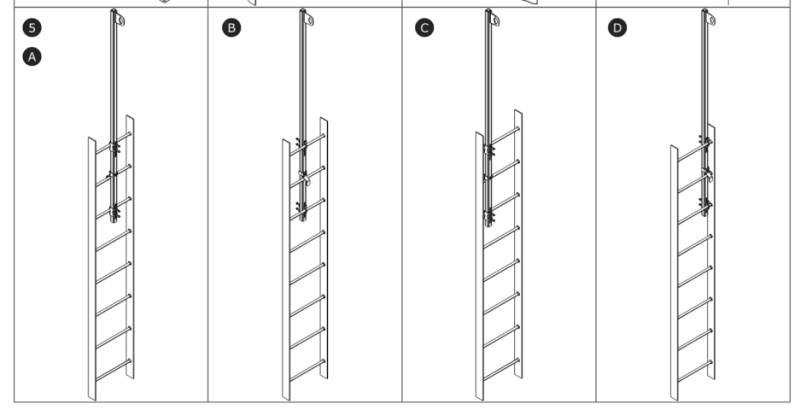Looking at a stainless steel fixed ladder design. The fabricator wants to use plug welds for the rung to rail connection (punch a hole in the rail, put the rung halfway in, and fill the hole with weld. Putting aside the fact that this isn't a great application of a plug weld to begin with (though I know it's commonly used), with a 1" diameter rail we violate the maximum hole size for the 3/8" thick rail anyway. My preference would be to tell them to do a fillet weld all around - 3/16" would suffice. But the EOR spec'd CJP welds for everything. Is there a prequalified CJP for this application? I started to think of a bevel-groove weld 'all around', but you can't put a backer in there or backgouge it...
Another thing - this is the first ladder I've had to design with a central fall arrest rail on it. The connection to the rungs has to support 3600lbs right at the ladder center line (this coming from the manufacturer's literature based on limits for engineered fall protection - max force in the system to be 1800lbs and a factor of safety equal to 2). That's a lot on a ladder rung. Minimum OSHA rung diameter is 0.75". This is stainless and at 18" wide I need 1" diameter anyway for strength. EOR also spec'd 1" rungs. But that 3600lb load pushes me up to a 2in ladder rung for strength. Does that sound right to anybody? Seems like a lot, and possibly uncomfortable for the worker climbing it. I can't find any maximum sizes in OSHA or the IBC. Anyone else have any experience with this? Did you just spec massive rungs or did you do something else?
Another thing - this is the first ladder I've had to design with a central fall arrest rail on it. The connection to the rungs has to support 3600lbs right at the ladder center line (this coming from the manufacturer's literature based on limits for engineered fall protection - max force in the system to be 1800lbs and a factor of safety equal to 2). That's a lot on a ladder rung. Minimum OSHA rung diameter is 0.75". This is stainless and at 18" wide I need 1" diameter anyway for strength. EOR also spec'd 1" rungs. But that 3600lb load pushes me up to a 2in ladder rung for strength. Does that sound right to anybody? Seems like a lot, and possibly uncomfortable for the worker climbing it. I can't find any maximum sizes in OSHA or the IBC. Anyone else have any experience with this? Did you just spec massive rungs or did you do something else?

